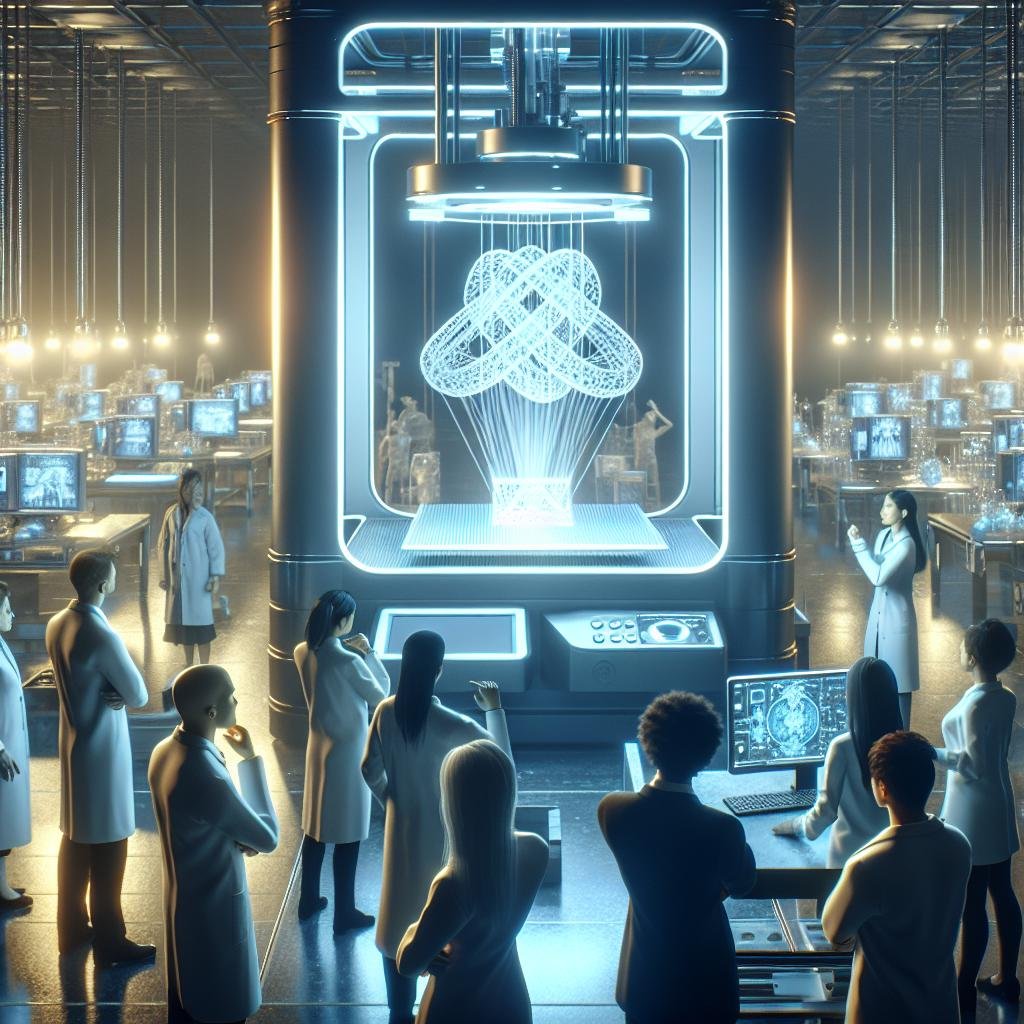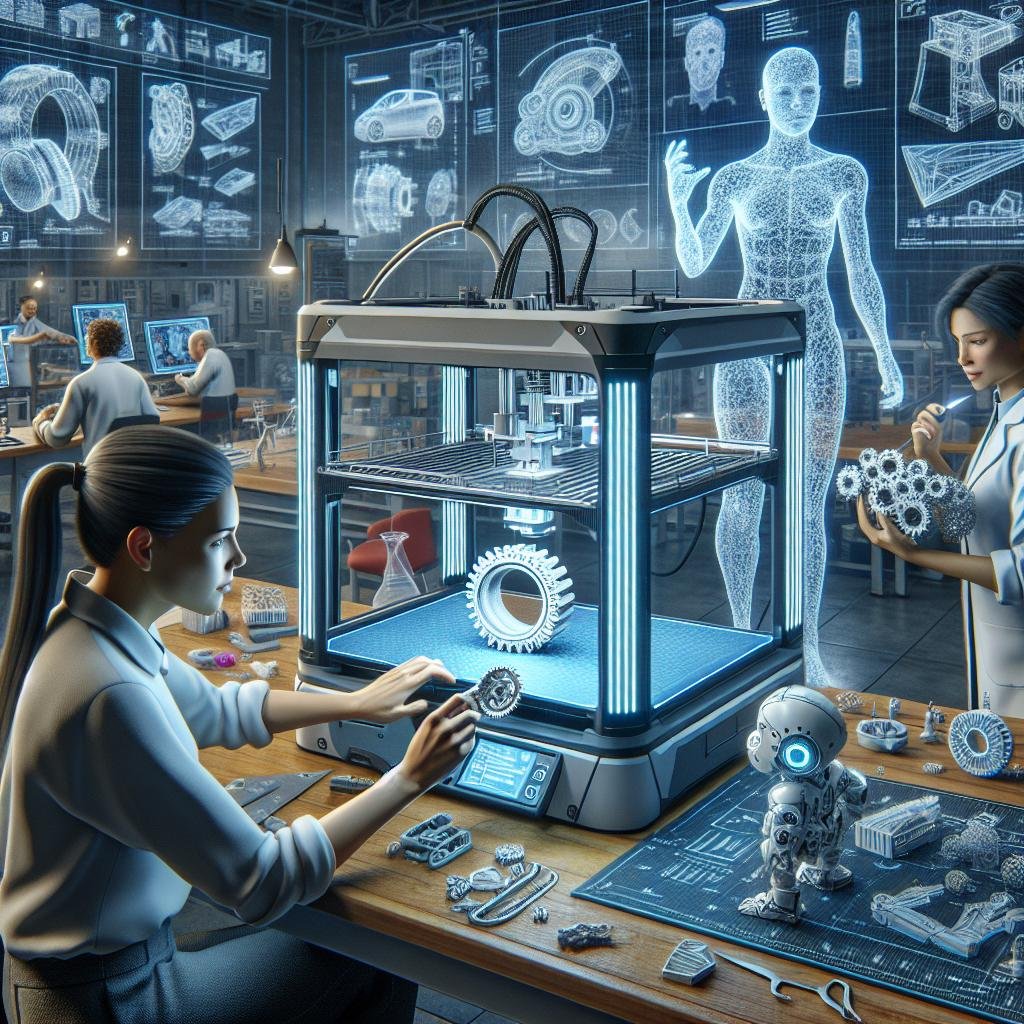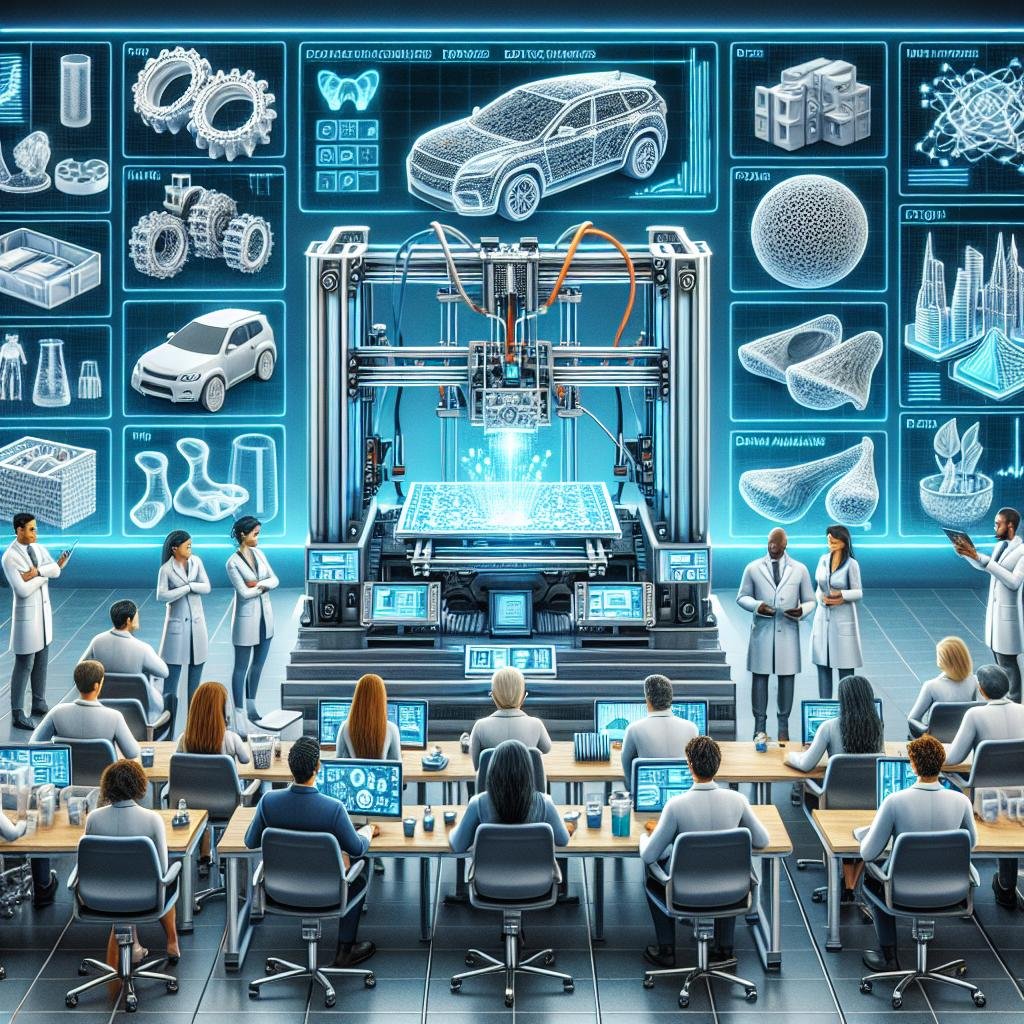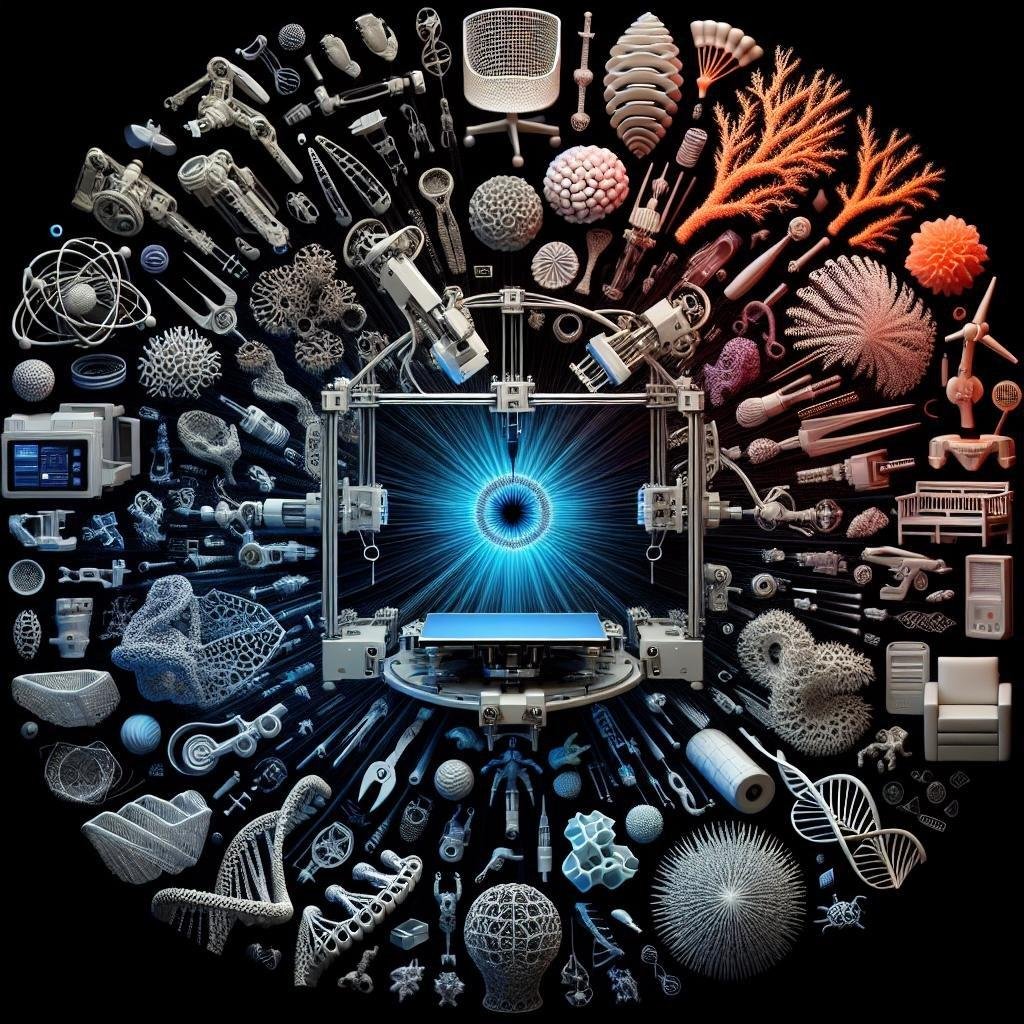In the not-so-distant past, the idea of creating intricate objects layer by layer seemed like something conjured from the realms of science fiction. But today, the hum of 3D printers is as familiar in workshops and classrooms as the whirr of a coffee machine in your favorite café. Imagine a world where, with a simple press of a button, you can materialize your wildest dreams, from custom-designed shoes that fit like a glove to entire houses built with breath-taking precision. This isn’t just the stuff of futuristic fantasies—this is the exciting world of 3D printing technology, evolving faster than we ever imagined. Join us as we step into this vibrant landscape, exploring the innovations and possibilities that are reshaping industries and pushing the boundaries of creativity. The future is unfurling, layer by remarkable layer.
Expanding Horizons: The Boundless Potential of 3D Printing
Imagine a world where creativity knows no bounds, and innovation springs from the hands of anyone with a spark of imagination. Such is the world being molded—quite literally—by the advancements in 3D printing technology. No longer confined to the realms of just prototypes and hobbyist projects, this technology is now enabling stunning achievements across an array of industries. From intricate medical implants that seamlessly integrate with the body to bespoke fashion pieces designed and printed within hours, the applications are as diverse as they are transformative. Indeed, we are entering an era where the limits of production are being torn down, replaced with limitless potential and wide, uncharted horizons.
The exponential growth in 3D printing capabilities extends to myriad fields, fuelling innovations once deemed science fiction. Consider the following captivating uses:
- Healthcare: Custom prosthetics, organ models for surgery planning, and even bioprinting tissues.
- Construction: Eco-friendly housing solutions with 3D-printed homes in record time.
- Aerospace: Lightweight, complex components that weren’t possible with traditional manufacturing.
- Art and Design: Unique sculptures and designs, created without the constraints of traditional tools.
To grasp the rapid pace of these developments, consider the evolving landscape of industries adopting 3D printing:
| Industry | Applications | Potential |
|---|---|---|
| Medical | Prosthetics, Bioprinting | Personalized Healthcare |
| Aerospace | Engine Parts, Structural Components | Efficiency, Performance |
| Fashion | Custom Jewelry, Shoes | Innovation in Textiles |
| Education | Teaching Models, Tools | Interactive Learning |
In tandem with these strides, the ecosystem supporting 3D printing is thriving, encompassing advancements in materials, software, and even regulatory frameworks to ensure quality and safety. The result is a fascinating vista of endless possibility, just waiting for the creative and the daring to explore and expand.

Revolutionizing Industries: 3D Printings Next Big Impact
3D printing is no longer the stuff of science fiction; it’s a transformative technology unlocking new realms of creativity and efficiency across various sectors. Imagine customizing designs on-the-fly in fashion, where your shoes and clothes can be tailor-made via an intuitive printed process. The healthcare industry is evolving too, with doctors creating patient-specific prosthetics and implants that fit like a glove. Furthermore, the automotive sector benefits by fabricating lightweight yet durable components, slashing production costs and time.
In the world of architecture, the technology allows for the swift creation of complex models and eventually homes, redefining affordable housing. Let’s not overlook the burgeoning potential in education, where students utilize 3D printers to bring classroom concepts to tangible life! Here’s a glimpse of industries already being transformed:
- Fashion – Custom wardrobes and accessories
- Healthcare - Personalized medical devices
- Automotive – Innovative car parts
- Architecture – Rapid prototyping and building
- Education – Hands-on learning tools
| Industry | Key Impact |
|---|---|
| Fashion | Customized personal items |
| Healthcare | Patient-specific solutions |
| Automotive | Optimized production phases |
| Architecture | Efficient building designs |
| Education | Interactive learning |

Navigating Challenges: Overcoming the Hurdles in 3D Printing
When venturing into the world of 3D printing, enthusiasts and professionals alike often encounter a variety of challenges. One such hurdle is the material limitations. Though a growing list of materials is becoming available, finding the perfect one for a specific application can still be tricky. For instance, you may need a material that is both strong and flexible, or one that can withstand high temperatures. Even if the right material is found, mastering its nuances is another battle. Some common issues include warping, layer adhesion problems, and inconsistent extrusion rates. Here are a few tips to tackle these common issues:
- Warping: Use a heated bed or add adhesive pads for better grip.
- Layer Adhesion: Adjust the print temperature for optimal bonding.
- Extrusion Rates: Calibrate your machine to ensure consistency.
Another major obstacle is design complexity. Even with advanced 3D modeling software, creating detailed and intricate designs can be complicated and time-consuming. Furthermore, translating these designs into physical objects often results in unexpected errors. For those new to 3D printing, learning how to design effectively and understanding printer capabilities can be a steep learning curve. To mitigate these issues, consider the following:
| Challenge | Solution |
|---|---|
| Design Flaws | Use simulations to test designs before printing. |
| Print Errors | Regularly maintain and calibrate your 3D printer. |

The Road Ahead: Strategic Steps for 3D Printing Enthusiasts
As we look forward to a future intertwined with the marvels of 3D printing, it’s crucial for enthusiasts to hone in on a few strategic steps that will propel both personal projects and the broader industry. One key step is embracing continuous learning. Given the rapid advancement in materials and printing technology, staying updated with the latest trends through online courses, webinars, and industry conferences will keep you ahead of the curve. Investing time in understanding emerging software and hardware solutions can also enhance your printing capabilities, offering you a competitive edge in this dynamic field.
Another significant move is fostering a community-driven mindset. Collaborating with fellow enthusiasts, joining makerspaces, and participating in forums or social media groups can amplify your knowledge and innovation. Additionally, starting personal or community projects can showcase your skills while contributing to collective growth. Consider the benefits of shared resources, whether it’s swapping filament or sharing designs – all these efforts culminate in a stronger, more united 3D printing community.
| Strategic Step | Example |
|---|---|
| Continuous Learning | Enroll in polymer science online courses |
| Community Engagement | Join local makerspaces |
- Embrace New Materials: Experiment with biodegradable and advanced composites.
- Promote Sustainability: Focus on reducing waste and recycling material.
Through these steps, we can chart a course towards a more innovative and connected future in 3D printing, harnessing the full potential of what’s to come.
Q&A
Q: What is the current state of 3D printing technology?
A:
Right now, 3D printing technology is like a teenager ready to take on the world—full of potential but still figuring things out. We’ve moved beyond printing simple plastic toys and are now creating everything from medical implants to entire houses! However, there’s still a lot to be discovered, perfected, and scaled up.
Q: What advancements can we expect to see in 3D printing over the next decade?
A:
Buckle up, because the future of 3D printing looks like it’s straight out of a sci-fi movie. We’re talking about multi-material printing, where a single printer can handle metals, plastics, and even biological tissues at the same time. Imagine a world where we can print custom-made organs or aerospace components with complex geometries that traditional methods could never achieve!
Q: Will 3D printing become more accessible to the average person?
A:
Absolutely! As the technology matures, it will become more affordable and user-friendly. Think of how computers or smartphones have evolved. We’re heading towards a future where having a 3D printer at home could be as common as having a microwave. You might be able to print out a new phone case, toys for your kids, or even a replacement part for your dishwasher in just a few hours.
Q: How will 3D printing impact industries like healthcare and construction?
A:
In healthcare, 3D printing is poised to revolutionize the field. Surgeons could have highly customized tools and prosthetics designed for individual patients. We’re already seeing some amazing progress in printing tissues and organs, which might lead to solving organ donor shortages one day.
Construction is also on the brink of a boost. Imagine constructing a house in a matter of days rather than months. 3D printing can cut costs, reduce waste, and create more complex designs than traditional methods ever could. The possibilities are as vast as your imagination!
Q: Are there any environmental benefits to 3D printing?
A:
Indeed, there are! One of the coolest things about 3D printing is its potential for sustainability. It minimizes waste because you’re only using the exact amount of material needed for each object. Plus, recycling plastics and other materials for filament could make the process even greener. As the technology advances, we could even see 3D printers running on renewable energy.
Q: What role will 3D printing play in education?
A:
Education is getting a futuristic facelift with 3D printing. From kindergarten to college, 3D printers can bring a hands-on approach to learning that books and videos simply can’t match. Students can print historical artifacts, complex molecules, or even prototypes for engineering projects. This tech will cultivate creativity, problem-solving skills, and a whole new generation of innovators.
Q: Are there any limitations or challenges that 3D printing currently faces?
A:
Like any tech in its formative years, 3D printing has its quirks and challenges. Speed and material limitations are two big areas where we’re still seeing active development. Right now, larger and more complex objects can take a long time to print—but speed improvements are on the horizon. Moreover, finding materials that are both versatile and affordable remains a challenge that innovators worldwide are tackling head-on.
Q: How might 3D printing influence the future of remote work or on-demand manufacturing?
A:
The possibilities here are super exciting! Imagine being in a remote part of the world and needing a crucial tool or part. With a digital blueprint and a 3D printer, you could ”manufacture” your needs locally, reducing supply chain issues and wait times. This could be a game-changer for industries like aerospace, where being on Mars and printing tools on-demand is no longer just a dream, but an eventual reality.
The future of 3D printing is brimming with promise, and we’re just beginning to scratch the surface of what’s possible. Stay tuned because this is one technological journey you won’t want to miss!
Closing Remarks
As we take our final steps on this journey through the future landscape of 3D printing technology, it becomes clear that we are on the brink of a new industrial revolution—one where imagination is the only limit. From revolutionizing healthcare and reimagining sustainable housing to transforming the way we create and innovate on a daily basis, the potential of 3D printing is nothing short of awe-inspiring.
So, whether you’re a tech enthusiast eagerly following each new advancement, a business owner ready to embrace disruption, or simply a curious mind fascinated by the wonders of modern science, remember—this is just the beginning. The blueprints of tomorrow are being drafted today, and each layer of printed material brings us one step closer to a world where dreams are printed into reality.
Stay tuned, stay curious, and keep that spark of innovation alive. The future of 3D printing isn’t just approaching; it’s being meticulously built, layer by fresh layer, in extraordinary detail. And who knows? The next groundbreaking design might just be waiting inside your very own printer. Happy creating!

